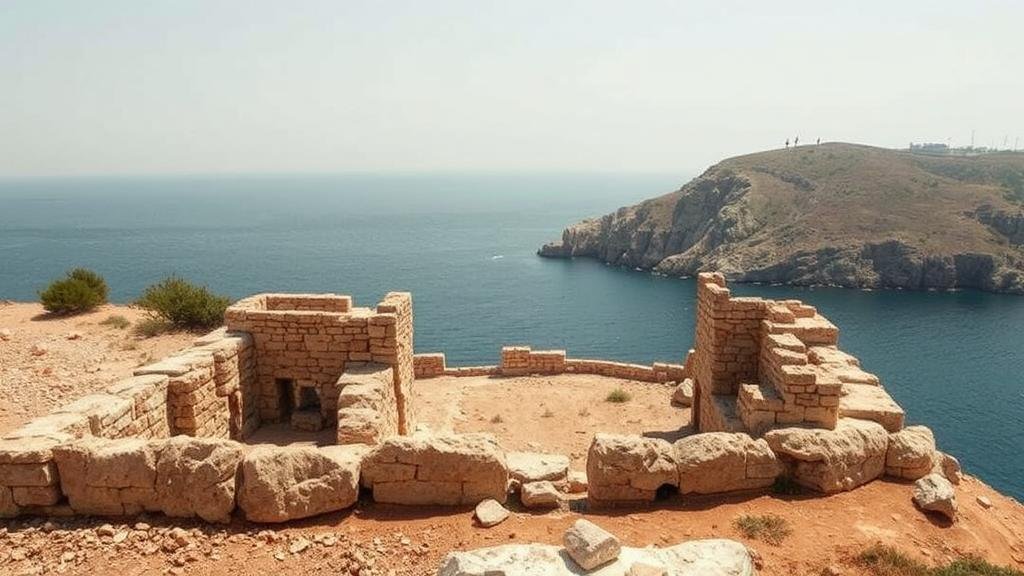Investigating the ruins of forgotten Phoenician outposts along Africa’s Mediterranean coast.
Investigating the Ruins of Forgotten Phoenician Outposts Along Africa’s Mediterranean Coast
The Phoenician civilization, renowned for its maritime prowess and trade networks, established several critical outposts along the African Mediterranean coast between 1200 BCE and 300 BCE. These establishments were instrumental in the spread of Phoenician culture, trade, and technology. Today, as archaeologists and historians delve into these forgotten ruins, they uncover not only the remnants of ancient structures but also insights into the socio-economic dynamics of the time. This article explores key Phoenician outposts, their significance, and the ongoing archaeological investigations that shed light on this fascinating aspect of ancient history.
Key Phoenician Outposts in North Africa
Among the most notable Phoenician outposts along the African Mediterranean coast are Carthage, Utica, and Leptis Magna. Each of these sites offers a unique glimpse into the Phoenician way of life and their strategies for trade and colonization.
- Carthage: Founded in the 9th century BCE, Carthage became the most powerful Phoenician city-state, known for its vast trade networks extending across the Mediterranean. The city was located near present-day Tunis, Tunisia, where archaeological digs have revealed extensive ruins, including the Tophet–a sacred burial ground.
- Utica: Established around 1101 BCE, Utica was one of the earliest Phoenician settlements in North Africa. Its strategic location allowed it to serve as a trading hub, and excavations have uncovered remnants of markets, homes, and temples that reflect its significance.
- Leptis Magna: Although primarily known as a Roman city, Leptis Magna was originally a Phoenician settlement founded in the 7th century BCE. Its impressive ruins, including the Theater and the Arch of Septimius Severus, illustrate the blend of Phoenician and subsequent Roman architecture.
The Importance of Trade and Cultural Exchange
The Phoenicians were master traders, and their outposts facilitated extensive commerce across the Mediterranean. They traded goods such as purple dye, glass, and textiles. r innovations in shipbuilding and navigation allowed them to traverse vast distances, establishing trade routes as far as the British Isles and the African coast.
For example, the famous Tyrian purple dye, derived from murex snails, became a highly sought-after commodity. The allure of this dye spurred commerce and established economic dependencies between the Phoenicians and various native cultures along the coast of Africa. Statistically, it is estimated that trade between the Phoenicians and these communities accounted for over 25% of the Mediterranean economy during its peak.
Recent Archaeological Discoveries
Recent archaeological efforts have uncovered significant artifacts and structures that provide context to Phoenician settlements. For example, excavations at Carthage have led to the discovery of a massive harbor complex, revealing the advanced engineering techniques employed by the Phoenicians. This harbor facilitated not only commercial trade but also naval military operations.
Similarly, in Utica, archaeologists have revealed a series of warehouses that suggest the scale of trade conducted from this outpost. These warehouses contained pottery, tools, and other items indicative of daily life and commerce, further illustrating the complexity of Phoenician trading practices.
Challenges in Archaeological Investigations
Despite the importance of these archaeological sites, there are significant challenges facing researchers. Many outposts have been affected by urban development, erosion, and looting. For example, uncontrolled urban expansion near Carthage has led to the degradation of historically significant ruins. Plus, the ongoing conflict in certain regions may hinder access to sites and impede continuing research efforts.
Conservation efforts are critical; initiatives to protect and preserve these ancient sites are underway. For example, UNESCO has designated Carthage a World Heritage site, which aids in securing funding and promoting awareness of its historical significance.
Conclusion and Takeaways
The exploration of Phoenician outposts along Africa’s Mediterranean coast reveals a narrative of innovation, trade, and cultural exchange that has shaped the foundations of civilization in the region. With ongoing archaeological efforts, there is a promise of further discoveries that will enhance our understanding of this ancient community.
As we continue to uncover the ruins of these outposts, several key takeaways emerge:
- Preserving archaeological sites is essential to safeguarding our cultural heritage.
- Trade dynamics in the ancient Mediterranean reflect the interconnectedness of diverse cultures.
- Investments in archaeological research can yield significant insights into historical economies and social structures.
In summary, the ruins of forgotten Phoenician outposts offer a remarkable glimpse into a civilization whose legacy continues to influence modern societies today.



